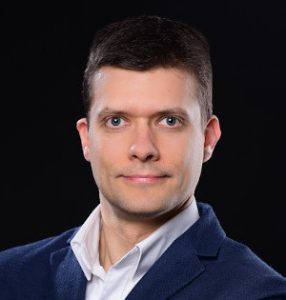Über mich

Bitte sehen Sie im Folgenden eine Übersicht meiner fachlichen Kompetenzen.
-
- FPGA-SoC-Entwicklung
- Implementierung von Signal-, Video-, Bildverarbeitungs- und spezifische Algorithmen
- Adaptive, wiederverwendbare und erweiterbare Systemarchitekturen
- Optimierung Durchsatz und Latenzzeit für jeweilige Technologie
- Zuverlässiges Clock Domain Crossing (CDC) und Aufnahme asynchroner Signale
- Entwicklungserfahrung mit Xilinx (ISE, EDK, Vivado, Vivado HLS), Intel (Quartus Prime), Lattice (ispLEVER, Diamond)
- Simulation und funktionale Verifikation mit ModelSim
- FPGA-SoC-Entwicklung
- Video- und Bildverarbeitung
- Algorithmen wie: DeBayer, Standard-ISP, Totpixel-Korrektur, High Dynamic Range (HDR), digitale Bildstabilisierung, Farbkorrektur, Autofokus, Bildschärfe, Bildfusion, Extended Depth of Field (EDoF), FFT, DWT
- Aufbau moderner Videoverarbeitungs-Pipelines
- Video- und Bildverarbeitung
- Signalverarbeitung
- digitale Filter speziell SuperSampleRate-FIR/IIR-Filter
- hochauflösende Zeitmessung im ADC-SubSample-Bereich (relevant für LiDAR, Time of Flight (ToF))
- hochauflösende Signalamplitudenmessung
- Rauschformung, Überabtastung und Signalaufbereitung
- Verschiedene Arten der Time-to-Digital Conversion (TDC) (relevant für LiDAR, Time of Flight (ToF))
- Aufnahme und Verarbeitung von Detektorsignalen (Impulsformung)
- Signalverarbeitung
- FPGA-SoC-Technologie
- Xilinx (Zynq Ultrascale+ MPSoC, Kintex, Artix, Virtex, Spartan)
- Intel (Stratix, Cyclon)
- Lattice (MachXO2, CrossLink)
- Multi-gigabit Transceiver (MGT)
- FPGA-SoC-Technologie
- Kamera- und Bildsensoren
- CCD, CMOS Bildsensoren und Zeilensensoren
- Direktanbindung von Bildsensoren an FPGA-Technologie
- Kameramodule inkl. ISP und Schnittstellen wie USB3, MIPI, LVDS, Camera Link
- Kamera- und Bildsensoren
-
- Schnittstellen und Kommunikation
- für Speicher: DDR-SDRAM, SRAM, Flash
- für GigaSample ADC: LVDS, JESD, Parallel
- für Bus-Syteme: PCI, PCIe, I²C, USB, Ethernet
- für Vision-Systeme: MIPI, LVDS, Camera Link, HDMI
- Schnittstellen und Kommunikation
- Hardwarenahe Software-Entwicklung
- Entwicklung von Bare-Metal Programmen für ARM Cortex, MicroBlaze, Nios, LEON3 (SPARC-Architektur) in C oder C++
- Hardwarenahe Software-Entwicklung
- Softwareentwicklung
- Embedded Linux zur Umsetzung von Host-Funktionen in Gesamtsystemen
- Nutzung der NVIDIA Jetson Serie zur Ausführung von eingebetteter Software und GPU-Beschleunigung von Bildverarbeitungs- und spezifischer Algorithmen mittels CUDA
- Computer-Grafik und Visualisierung in eingebetteten Systemen mittels OpenGL ES
- Anwendungsentwicklung für Host-Systeme in C++ oder C# mittels MS Visual Studio oder GCC
- Softwareentwicklung
-
- Programmierumgebungen
- MATLAB, Python zur Entwicklung, Simulation und Evaluierung innovativer Algorithmen
- Programmierumgebungen
April 2023
Zeitschriftenartikel
Markus Jäger, Tilo Reinert
A digitizer based compact digital spectrometer for ion beam analysis using field programmable gate arrays and various energy algorithms
Review of Scientific Instruments 84 (8), 085105 (2013)
Zeitschriftenartikel
Markus Jäger, TilmanButz
FPGA implementation of digital constant fraction algorithm with fractional delay for optimal time resolution
Zeitschriftenartikel
Markus Jäger, TilmanButz
Zeitschriftenartikel
A compact digital time differential perturbed angular correlation-spectrometer using field programmable gate arrays and various timestamp algorithms
Review of Scientific Instruments 82, 065105 (2011)
Zeitschriftenartikel
A user-friendly fully digital TDPAC-spectrometer
A method for correcting colors of a color reproduction of a digital microscope and a digital microscope are described. In a first step of a method according to the invention, a color image of a sample that is to be examined under the microscope is recorded. When the recording is performed, wavelength-dependent properties of a microscope illumination unit that illuminates the sample are determined in order to describe a state of the microscope illumination unit, in that settings selected at the microscope illumination unit are captured. A set of correction values is determined, which is associated with a state of the microscope illumination unit that is selected in accordance with the state of the microscope illumination unit determined when the recording is performed. In a further step, the colors of the recorded color image of the sample are corrected by applying the correction values of the previously determined set.
Provided is a microscope comprising a recording unit, having a magnifying imaging optical unit and an image module, for recording images of a sample with a first image frequency and a digital evaluation unit, to which the recorded images are supplied and which carries out predetermined image processing based on the recorded images and produces, as a result, output images with a second image frequency that is smaller than the first image frequency or equal to the first image frequency and can transfer them to an output unit for representation.